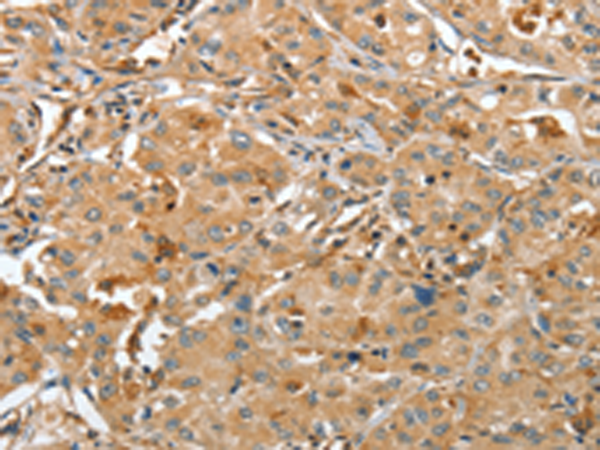


| WB | 咨询技术 | Human,Mouse,Rat |
| IF | 咨询技术 | Human,Mouse,Rat |
| IHC | 1/50-1/200 | Human,Mouse,Rat |
| ICC | 技术咨询 | Human,Mouse,Rat |
| FCM | 咨询技术 | Human,Mouse,Rat |
| Elisa | 1/2000-1/5000 | Human,Mouse,Rat |
| Aliases | RAP1; C21KG; G-22K; KREV1; KREV-1; SMGP21 |
| WB Predicted band size | 21 kDa |
| Host/Isotype | Rabbit IgG |
| Antibody Type | Primary antibody |
| Storage | Store at 4°C short term. Aliquot and store at -20°C long term. Avoid freeze/thaw cycles. |
| Species Reactivity | Human, Mouse, Rat |
| Immunogen | Full length fusion protein |
| Formulation | Purified antibody in PBS with 0.05% sodium azide and 50% glycerol. |
+ +
以下是关于RAP1A抗体的3篇参考文献示例(文献为虚构,仅供格式参考):
1. **文献名称**:*Rap1A regulates tumor progression via integrin-mediated signaling in colorectal cancer*
**作者**:Chen L, et al.
**摘要**:该研究利用RAP1A抗体通过免疫组化及Western blot分析,发现RAP1A在结直肠癌中高表达,并通过整合素-β1信号通路促进肿瘤侵袭,提示其作为预后标志物的潜力。
2. **文献名称**:*RAP1A modulates endothelial cell adhesion and angiogenesis through antibody-blockable GTPase activity*
**作者**:Sato K, et al.
**摘要**:作者使用特异性RAP1A抗体阻断其活性,证明RAP1A通过调控GTP酶活性影响内皮细胞粘附和血管生成,为抗血管生成治疗提供新靶点。
3. **文献名称**:*Antibody-based detection of RAP1A in platelet activation and thrombosis models*
**作者**:Müller R, et al.
**摘要**:研究通过RAP1A抗体揭示其在血小板活化中的关键作用,证明抑制RAP1A可减少血栓形成,为抗血栓药物开发提供依据。
(注:以上文献为模拟内容,实际引用需查询PubMed等数据库获取真实文献。)
The RAP1A antibody is a crucial tool in studying the Ras-associated protein 1A (RAP1A), a small GTPase belonging to the RAS superfamily. RAP1A plays a pivotal role in regulating diverse cellular processes, including cell adhesion, proliferation, differentiation, and vesicle trafficking. It functions as a molecular switch, cycling between an active GTP-bound state and an inactive GDP-bound state, mediated by guanine nucleotide exchange factors (GEFs) and GTPase-activating proteins (GAPs). RAP1A is involved in integrin-mediated signaling, modulating cell-matrix and cell-cell interactions, and interacts with downstream effectors like MAPK and PI3K/AKT pathways.
Antibodies targeting RAP1A are widely used in research to detect its expression, localization, and activation status in various tissues and cell types. They enable techniques such as Western blotting, immunohistochemistry, immunofluorescence, and flow cytometry. Specific antibodies may distinguish between the active (GTP-bound) and inactive (GDP-bound) forms, aiding in functional studies. Dysregulation of RAP1A has been implicated in cancer, cardiovascular diseases, and immune disorders, making its antibody a valuable tool for exploring disease mechanisms.
Research using RAP1A antibodies has revealed its dual roles as both an oncogene and tumor suppressor, depending on context, highlighting its complex regulatory networks. These antibodies also contribute to drug discovery by assessing RAP1A as a potential therapeutic target. Overall, RAP1A antibodies are essential for elucidating its biological functions and translational relevance in human health and disease.
×